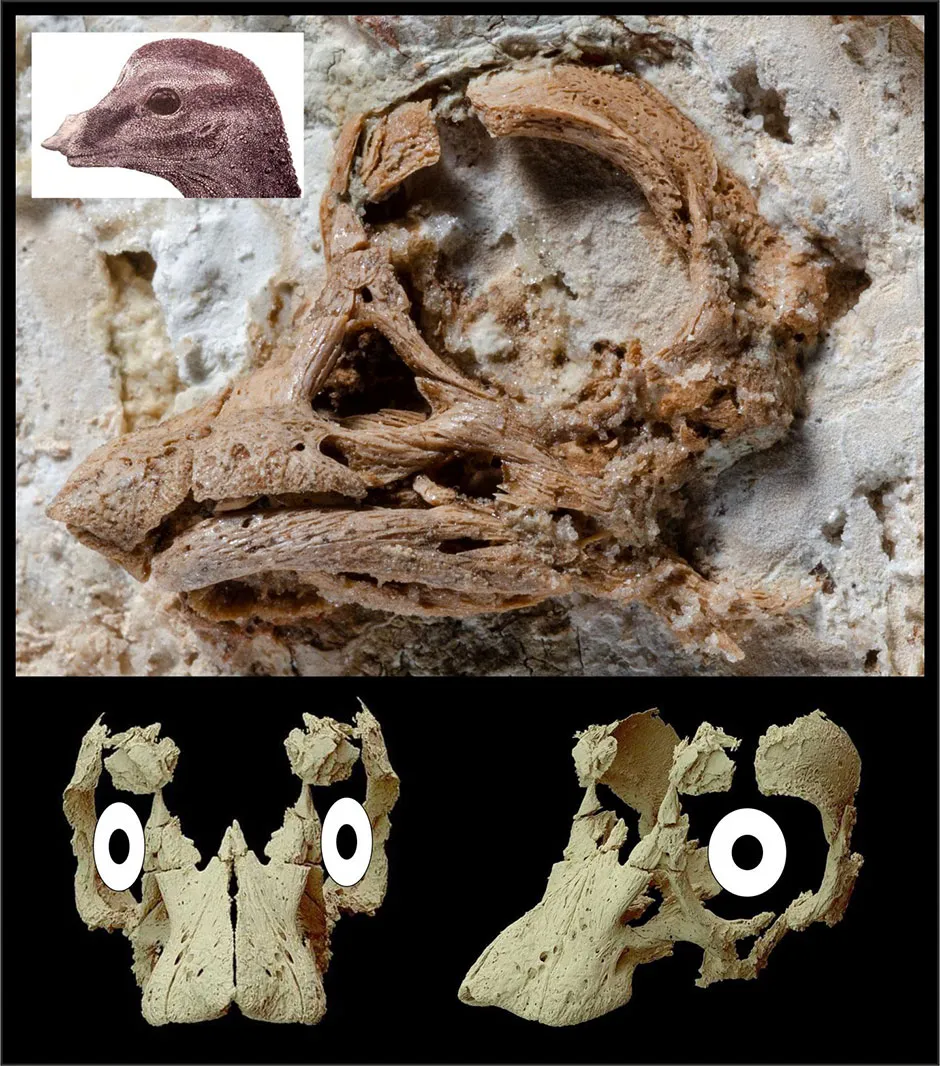The first 3D scan of a sauropod embryo’s skull has revealed what these gigantic dinosaurs looked like as tiny hatchlings.
Sauropods are a family of dinosaurs that are instantly recognisable from their small heads and their long, sweeping necks and tails – Diplodocusand Brontosaurusare two of the best-known examples.
The first sauropod embryos were discovered around 25 years ago in an 80-million-year-old nesting ground of titanosaurs (a group of especially large sauropods) at a site called Auca Mahuevo in the Patagonian region of Argentina.
Read more about fossils:
- Ancient reptile ‘well-preserved’ in stomach of slightly larger reptile
- Eigg-ceptional dinosaur bone found on Scottish island
The newly-analysed skull also belongs to a titanosaur from Patagonia, although the researchers don’t know exactly where, as the fossilised egg that it was found in was originally smuggled out of the country, and only came to the researchers’ attention later on.
The team used an X-ray imaging technology called synchrotron microtomography to analyse the inner structure of the skull’s bones, teeth and soft tissue. This uncovered hidden details such as tiny teeth preserved deeply in the jaw sockets, and what appear to be the remains of chewing muscles.

The position of the embryo’s eye sockets also suggests that, unlike adults, the freshly hatched sauropods may have had a form of binocular vision, in which the slightly different images from each eye give an improved depth perception – perhaps helping it to better detect predators. The embryo also has an unusual horn at the tip of its face, which isn’t present in adults.
“Our study revealed several new aspects about the embryonic life of the largest herbivorous dinosaurs that lived on our planet,” said study leader Dr Martin Kundrát, a palaeobiologist at Pavol Jozef Šafárik University in Slovakia. “A horned faced and binocular vision are features quite different from what we expected in titanosaurian dinosaurs.”
Reader Q&A: Could we bring back an extinct species using DNA, Jurassic Park style?
Asked by: Alec Maddocks, via email
To ‘de-extinct’ an animal, you need a source of the animal’s DNA, which provides the blueprint for making it. DNA is sometimes preserved in fossils, and the oldest DNA extracted to date comes from a 700,000-year-old horse bone found in the Canadian permafrost.
However, DNA breaks down over time, and scientists think that it’s unlikely to be found in any specimen older than a million years. Dinosaurs went extinct 65 million years ago. No dinosaur DNA, no dinosaurs. Sorry!
Some other species, however, are fair game. In 2003, scientists briefly de-extincted a type of goat, called the bucardo. DNA-laden cells, taken from the last living female before she died, were used to create a clone, and the resulting embryo was transplanted into the womb of a living domestic goat.
The bucardo was delivered by Caesarean section, but died shortly after birth due to lung defects. The bucardo was therefore the first animal to be de-extincted, but also the first animal to go extinct twice!
Other de-extinction projects include attempts to revive an Australian amphibian called the gastric-brooding frog, a North American bird called the passenger pigeon and the one and only woolly mammoth. These use a combination of cloning, gene-editing and stem cell methods, but don’t hold your breath waiting for the pitter-patter of tiny feet. De-extinction is still very much in its infancy, so for now, take solace in the fact that dinosaurs never really left us. Birds are their direct descendants, and they’re everywhere.
Read more: